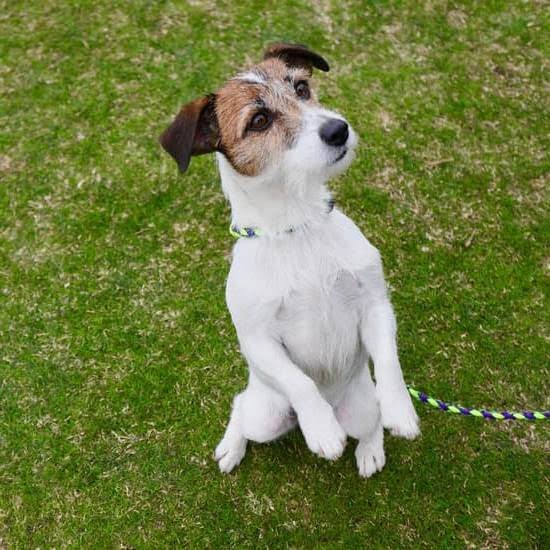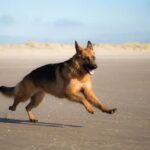Introduction
Training your dog not to jump on people is an essential part of being a responsible pet owner. By teaching your pup boundaries, you can help create a strong bond and level of trust between your furry friend and yourself. Training also allows visitors to feel more comfortable visiting your home—after all, it can be intimidating when faced with an overly enthusiastic pooch.
Teaching your dog not to jump eliminates any potential risk of accidents or injuries caused by their excited jumping behavior. Plus, reinforcing appropriate behavior can be incredibly rewarding for both you and your pup, as it encourages growth in the relationship between the two of you. This type of training also helps ensure that any time spent outside of the home is a calm and enjoyable experience for both human and canine alike.
Understanding why dogs jump on people
There are a variety of different breeds and temperaments that can influence why some dogs are more prone to jumping than others. For example, breeds such as Labradors, Retrievers, Bulldogs and Golden Retrievers have a more friendly and outgoing disposition, which tend to lead them to be more likely to jump on humans when they meet them. On the other hand, smaller breeds such as Chihuahuas, Toy Poodles or Yorkies may also be quick to jump but their small size makes them less intimidating. Breeds with higher levels of energy, such as herding dogs like Shetland Sheepdogs or Australian Shepherd may also present issues when it comes to jumping, especially if there is little exercise outlet for this energy available. In addition, individual temperaments will also play a role in whether a dog jumps on people – even within the same breed – so observing your dog’s behavior closely will help you better understand why they are exhibiting the behavior.
Preparing for training
1. Start by establishing a predictable routine and timing for the training sessions. Dogs learn best when they have regular times and places to practice a behavior.
2. Choose treats that your dog will be highly motivated to work for, like small bits of cooked chicken, cheese, or hot dog slices. Place several small pouches in your pocket or around the room so you always have a treat available when you begin training.
3. Make sure that there is no one around during your training session who might distract your dog from you and the task at hand. When ready to start, get your dog’s attention first by calling its name or making some noise (e.g., clapping). Look into their eyes and reward them with a treat when they come to you. Repeat until they seem focused on you and responding positively to the praises and rewards they receive.
4. When introducing the “no jumping” command, use a phrase like “Off” or “Down” every time you catch your dog in the act of jumping up on someone or something else before it is able to complete its jump-up behavior – right as soon as it begins to lift its legs off the ground towards their target’s body – then immediately provide an appropriate reward after it obeys the verbal instruction (e.g., treat, belly rub).
5. Be sure to use consistent commands; try not to change between them (e.g., saying “down” one time and “off” another) as this could confuse your pup about what exactly it should be doing when it hears each specific instruction/command from you later on down the road (as can other factors such as tone of voice too).
6. Practice this same process whenever there is another person around in real life scenarios -try starting with friends/family members or strangers walking past if at all possible- as this will give him more opportunity to generalize his new behavior quickly while seeing that leaping at people cannot possibly bring any good results whatsoever
Introducing the No-Jump command
To teach a dog not to jump on people, it is important that they learn the ‘No-Jump’ command. The first step is to be consistent – when the word or phrase ‘No-Jump’ is used, it should mean the same thing each and every time.
The No-Jump command should be paired with positive reinforcement techniques such as verbal praise, physical affection (e.g. stroking or patting), treats and/or toys when the dog does not jumps. This will help your pet understand what behaviors are acceptable and which ones are off limits. On the other hand, negative reinforcement techniques such as physically correcting a dog for jumping could lead to further confusion and/or mistrust.
In addition to using verbal cues for the No-Jump command, it can also be encouraged through body language such as raising an arm or bending down in front of them (while avoiding direct eye contact) when they start to jump up. Doing this displays a barrier between you and your pup – which signals that we do not want them to jump. Additionally, having an off leash area where they can run freely with no one around can help prevent jumping up as there’s no one to interact with in this space!
Training Sequence
Props can be an effective tool when teaching a dog not to jump. Ladders, toys, and balls can help reinforce the ‘No-Jump’ command. For example, start by having the dog sit in front of a ladder that is facing away from you. This teaches the dog that jumping up is not allowed. Then, offer rewards such as treats or toys when they remain sitting in front of the ladder. Try adding a few toys or balls on either side of the ladder. If your pup attempts to jump up, toss them back down and give them another command such as ‘down’. This sends a signal that jumping is not allowed and will enforce the No-Jump rule in their mind. Additionally, you can use toys and balls for interactive playtime where playtime stops if he tries to jump on you. Make sure to reward him often with praise or treats when he shows good behaviour instead of jumping on people. With enough time and patience your pup will learn what behavior is acceptable and won’t jump on people anymore!
Managing Your Dog’s Jumps
In order to prevent your dog from jumping on people, it is important to recognize the body language signals that can indicate when your dog might be about to jump. These signals could include pawing in the air, leaping around or getting up in a person’s space. If you notice any of these behaviors arise, take immediate action. Command your pet to sit or lie down and give them an alternate activity such as toys or chewables to distract them. Work with your dog over time and reward good behavior so that they understand that it is better to sit calmly next to someone than jump up on them. It also helps if visitors come prepared with treats so that they can reward the dog for not jumping.
Conclusion
The most effective way to train your dog not to jump on people is to provide positive reinforcement when they show the desired behavior. Rewards such as treats, verbal praise, petting and playtime can be used to encourage them not to jump. It is important to reward your dog immediately after it has displayed the right behavior, as this will help them learn faster and establish good habits in the long-term.
If there are any setbacks during training, it is important for you to remain calm and consistent in setting boundaries. A gentle “No” or “Off” should be used if your pet does something wrong and should be said in a firm voice so that they understand what it means. Praise should still be given every time they do something correct even if mistakes occur along the way. If a mistake does happen, take some time to reflect on why it happened and make sure you implement different teaching techniques for next time.
Providing rewards when your dog displays good behavior can give them incentive to keep trying until they master the skill of not jumping on people. When rewarding your pup, make sure that their rewards are age-appropriate – while special treats like small pieces of cheese or meat may work well for puppies, an older dog may simply appreciate getting extra cuddles or playtime with its favorite toy instead. Additionally, don’t forget that reinforcing the new behavior outside of lesson times will also help keep a consistent message – regular repetition throughout the day will further assist with learning.

Welcome to the blog! I am a professional dog trainer and have been working with dogs for many years. In this blog, I will be discussing various topics related to dog training, including tips, tricks, and advice. I hope you find this information helpful and informative. Thanks for reading!





